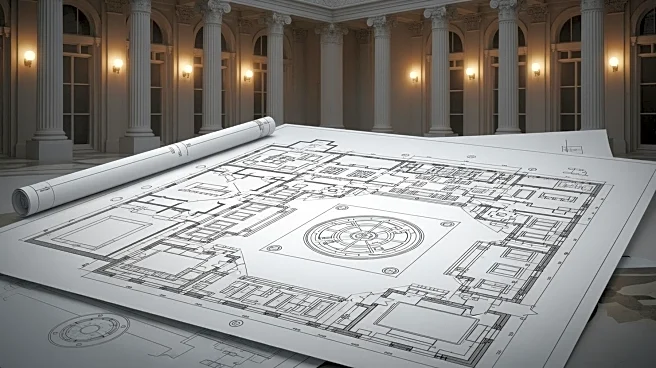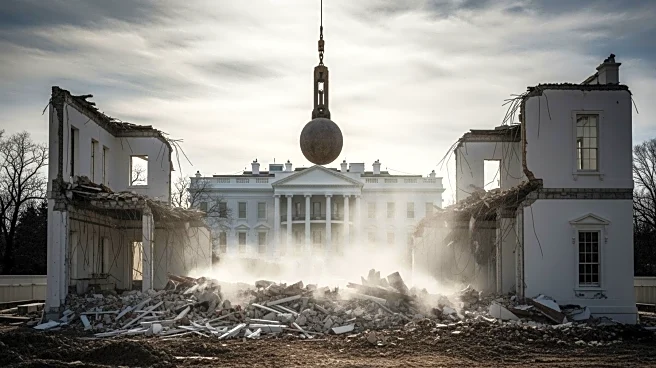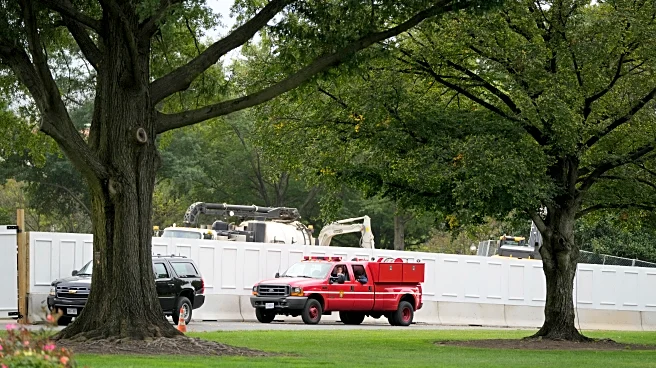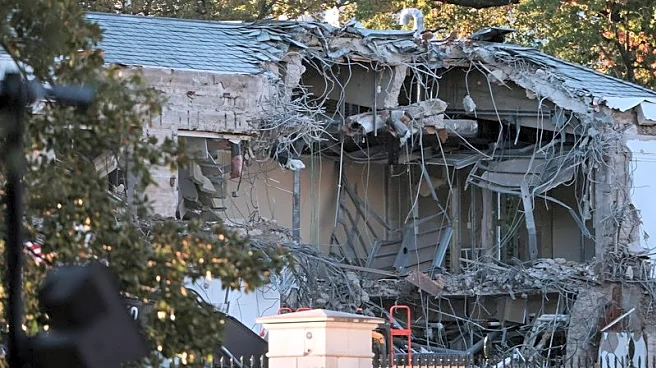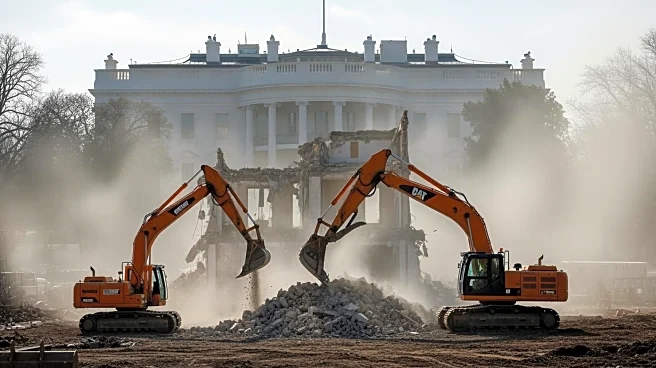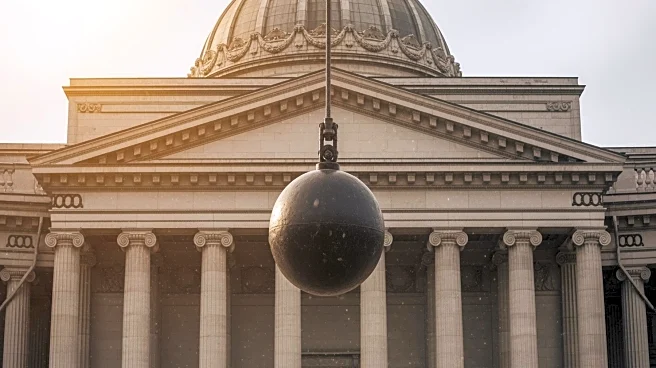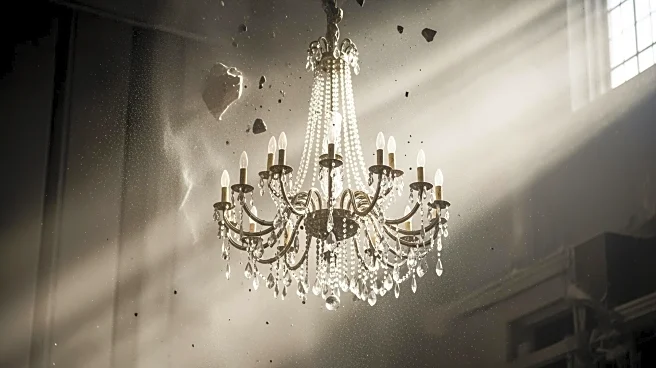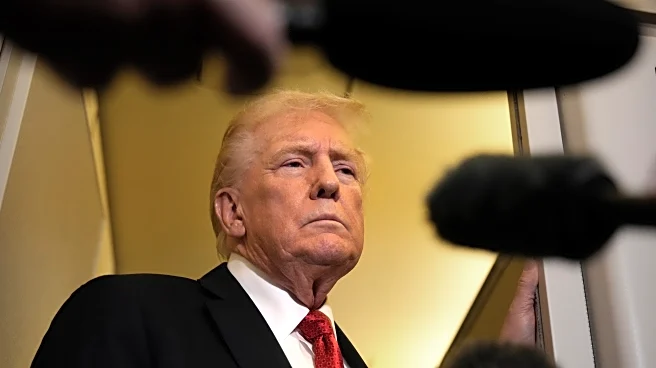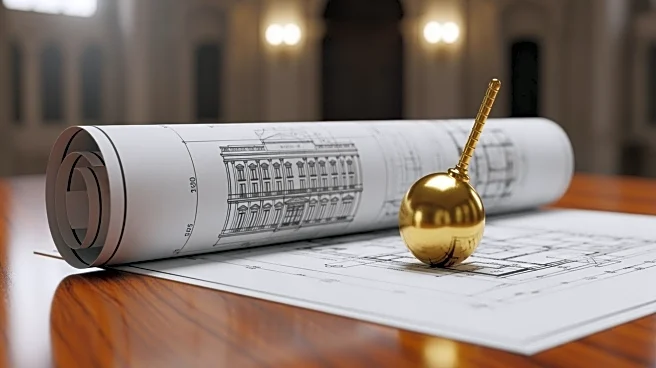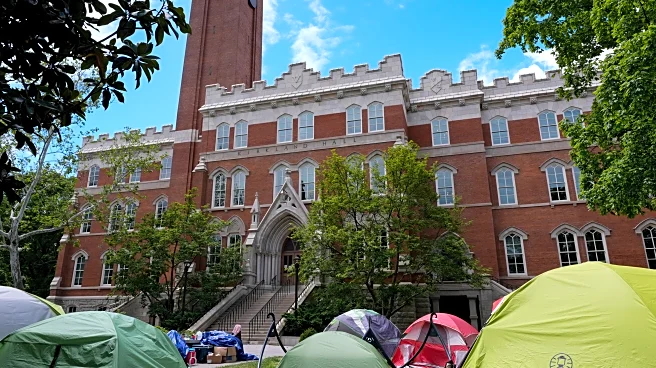What's Happening?
Demolition crews have started tearing down part of the White House's East Wing to construct President Donald Trump's long-desired ballroom. Despite Trump's previous assurances that the $250 million addition
would not interfere with the existing structure, the demolition is underway. The construction involves removing a portion of the East Wing, with visible activity including a backhoe ripping through the structure. The project has drawn attention from various observers, including members of the Secret Service and Treasury Department employees. Trump acknowledged the construction during a White House event, emphasizing the historical desire for a ballroom at the White House. The project has faced criticism from Democrats, who argue that Trump's priorities are misaligned with those of average Americans.
Why It's Important?
The construction of a ballroom at the White House represents a significant alteration to a historic building, raising concerns about preservation and priorities. Critics, including California Governor Gavin Newsom, have labeled the project as emblematic of a 'Second Gilded Age,' suggesting it reflects Trump's focus on opulence over pressing national issues. The ballroom, intended to host large gatherings, could change the dynamics of official events at the White House, potentially influencing diplomatic and political engagements. The project also highlights the influence of corporate donations, with major companies contributing to its funding, which may raise questions about corporate influence in political affairs.
What's Next?
The construction is expected to continue, with the ballroom set to replace the East Wing. The administration has detailed plans for significant changes to the White House, marking one of the most substantial alterations in a century. The National Park Service, responsible for managing the White House grounds, has yet to comment on the extent of the demolition. As the project progresses, further scrutiny from political leaders and preservationists is likely, potentially leading to debates over the balance between modernization and historical preservation. The ballroom's completion could also impact future presidential administrations and their use of the White House for official functions.
Beyond the Headlines
The construction of Trump's ballroom at the White House raises broader questions about the intersection of personal ambition and public service. The project, funded by large corporate donations, may prompt discussions about the ethical implications of private funding for public projects. Additionally, the focus on creating a venue for grand events contrasts with ongoing national challenges, such as government shutdowns and economic concerns, highlighting potential disparities in presidential priorities. The ballroom's construction could also influence cultural perceptions of the presidency, emphasizing a shift towards grandeur and exclusivity.
